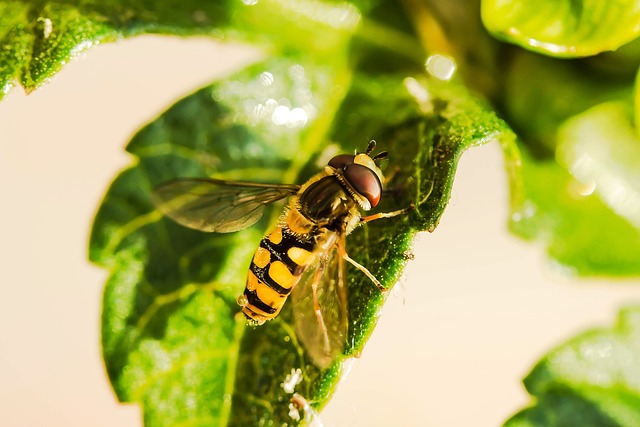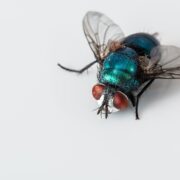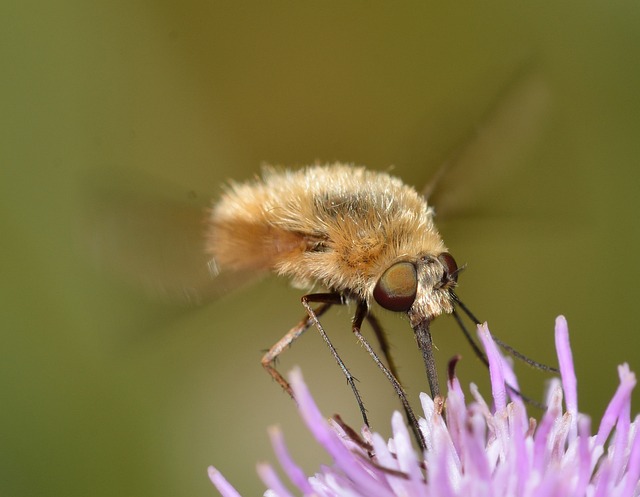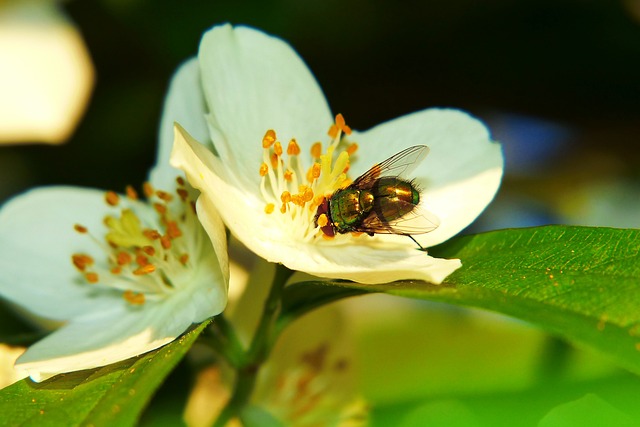FLIES FOR THE PLATE
We all know the importance of bees in pollination, but did you know that many other species such as flies pollinate flowers as well?
Pollinating species take nectar from flowers and at the same time fertilize them with pollen that they carry on their bodies. The fertilized flowers will make a fruits, some comestible to our great delight. Without them, we would not be able to enjoy fresh strawberries or cucumbers from Quebec, or even the comforting tomato sauce! In addition to bees, bumblebees, wasps and hummingbirds, pollinators include species of flies, butterflies, beetles and bats[1][2].
The intriguing world of flies

A fly of the syrphidae family, unmistakably resembling a wasp or a bee when seen in flight. Image by Myriams-Fotos.
Don’t be fooled, this is not a bee, but a fly! Sometimes we get fooled by looking at an insect on a flower. Here, this fly is one of the species of the big family Syrphidae. The shape of their body and the colors imitate those of bees and wasps. The Bombyliidae, another family of flies, are hairy and plump. They strongly resemble bumblebees and bees.
Others, green or blue iridescent, are scavengers and seek flowers that have an odor of rotting meat. These are the flies of the family Calliphoridae. The red trillium is an example of a flower with a nauseating smell if you put your nose in it, but for the Calliphoridae, it is a treat!
[1]Office française de la biodiversité, 2023. Les pollinisateurs. Accessed april 5 2023 at the adress : https://www.ofb.gouv.fr/les-pollinisateurs
[2] Gibernau et Quilichini, 2016. POLLINISATION : DES INSECTES MAISN AUSSI DES VERTÉBRÉS. Accessed april 5 2023 at the adress : https://www.researchgate.net/profile/Angelique-Quilichini/publication/308874531_Pollinisation_des_insectes_mais_aussi_des_vertebres/links/57f682ec08ae8da3ce577211/Pollinisation-des-insectes-mais-aussi-des-vertebres.pdf





